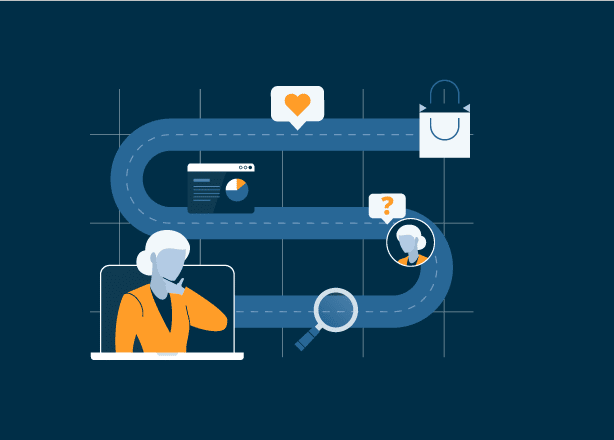
“You’ve got to start with the customer experience and work back toward the technology, not the other way around.” Steve Jobs
One of the most helpful tools for Customer Experience Management is customer journey mapping, used to understand and define the customer experience. There are many variations of this technique, and our aim is to highlight some points for you to bear in mind if you think this might be a useful initiative. Your customer’s journey is each of the interactions they have with your organization through your various touch points. This could be instore, via email or social media, the in-person service they receive or the online interactions they have with your employees.
65% of customers are more influenced by great experience than by advertising. If you get your customer journey right, you are more likely to create happy and loyal customers. Many of these will go on to be excellent word of mouth ambassadors for your brand, as well as repeat customers.
How to map your map
Start by considering the end-to-end journey of the customer, even if this includes areas over which you have little or no control. If you are a train company, the local car park is part of your customers’ experience. It will affect customers’ perception of your offer (even if it is provided by a third party) and might have an impact on your business (e.g., the car park is always full, is badly maintained or is prone to vandalism and there is another train station close by).
Common sense
At each stage of the customer journey, all the senses need to be considered to design and implement the optimum customer experience. In a banking client’s office, we discovered that mail room employees wheeled a trolley through the reception area, where important visitors were awaiting their host. The trolley had the loudest squeaky wheels you can imagine and clearly this did not support and reinforce the smooth, sophisticated image the bank wished to portray.
The senses can be used to emphasize the uniqueness of a branded customer experience. Abercrombie & Fitch was one of the first businesses to use scents in their stores and in their marketing. In Ritz Carlton hotels you will hear employees say, “It’s my pleasure” and never “That’s Ok” or “No problem”. Tiffany’s iconic shade of ‘robin’s egg’ blue, trademarked as Tiffany Blue is ubiquitous on everything from jewellery boxes to shopping bags to advertising.
Know, do, feel
It is also important to think about what you want the customer to know, do and feel at each stage of the journey or at key touchpoints. Using the example of a hotel registration, welcoming a guest back to the hotel and providing them with a registration card for their signature lets them know that you have remembered their previous visit, prompts them to provide their signature and makes them feel valued as a returning guest. The key card can then be issued in a small card ‘wallet’ displaying their room number and signature so they can present it to charge any services to their room account during their stay. This wallet can also include other information about the hotel’s facilities, and the receptionist can offer to make a dinner reservation before directing the guest to their room.
SERVICEBRAND
At SERVICEBRAND Global, we help organizations to develop their customer journey maps as a foundational tool in their Customer Experience strategy. If you think this is an area that could help improve customer satisfaction, loyalty and sales, why not see how the SERVICEBRAND approach could help you?

